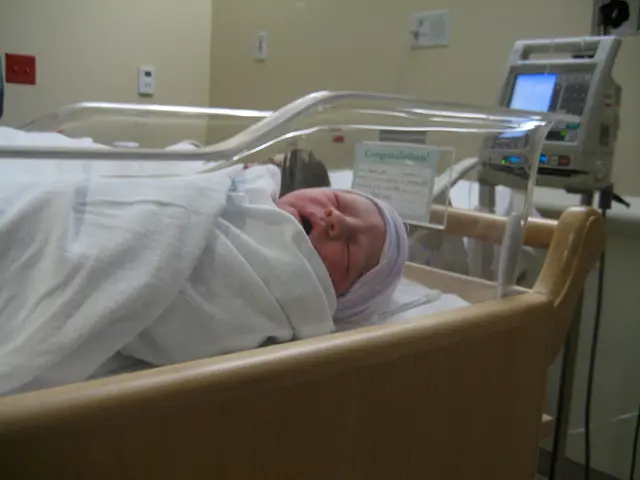Enhance Your Posture: Explore 12 Effective Exercises for Better Alignment
Maintaining good posture is essential for developing strength, flexibility, and balance, and a combination of yoga, stretching, and strengthening exercises may help correct posture over time. Here are some yoga poses that can contribute to improving posture and reducing the risk of muscle and spinal injuries.
Core and Back Strengthening Exercises
The high plank is a popular yoga pose that helps develop balance and strength in the core and back, both important for good posture. To perform the high plank, start in a push-up position with your wrists directly under your shoulders, engage your core muscles, and hold this position for up to a minute.
Another pose that targets the back muscles is the downward-facing dog. To do this pose, lie with your stomach on the floor, press into your hands, tuck your toes under your feet, lift your heels, and lift your knees and hips to bring your sitting bones up toward the ceiling. Bend your knees slightly and lengthen your spine, keeping your ears in line with your upper arms or tucking your chin all the way into your chest. Press firmly into your hands and keep your heels slightly lifted.
Hip and Glute Exercises
The glute bridge is an effective exercise for strengthening and activating the glutes, which can help improve posture by supporting the hips and pelvis. To perform the glute bridge, lie on your back with your knees bent and your feet about hip-distance apart, keeping your feet about a foot away from your hips. Rest your arms alongside your body with your palms facing down, exhale as you lift your hips toward the sky, straightening your spine, and hold this position for up to a minute. Repeat the exercise as needed.
Pigeon Pose is a hip-opening posture that can loosen up the spine, hamstrings, and glutes. To do this pose, come down on all fours with your knees below your hips and your hands a little bit in front of your shoulders. Bend your right knee and place it behind your right wrist with your right foot angled out to the left, resting the outside of your right shin on the floor. Slide your left leg back, straighten your knee, and rest your thigh on the floor, making sure your left leg extends straight back (and not to the side). Lower your torso down to rest on your inner right thigh with your arms extended in front of you, holding this position for up to a minute, and repeat on the opposite side.
Spine and Torso Exercises
Cat-Cow Pose could help relieve tension in the torso, shoulders, and neck while promoting blood circulation and spinal mobility. To do this pose, come onto your hands and knees, align your wrists under your shoulders and your knees under your hips. Inhale as you arch your back and lift your head and tailbone, exhale as you round your back and tuck your chin into your chest. Repeat this movement for several breaths.
Thoracic spine rotation gently opens the chest and rotates the spine, potentially relieving tightness and increasing stability and mobility. To do this pose, sit on the floor with your legs crossed, place your right hand behind you and your left hand on your right knee. Twist your torso to the right, looking over your right shoulder, hold this position for a few breaths, and then repeat on the opposite side.
Shoulder and Arm Exercises
Isometric pulls work the shoulder, arm, and back muscles, giving you the strength to maintain good posture. To perform isometric pulls, sit in a chair with a soft back, make a fist with each hand and extend your arms in front of you so that they're parallel to the floor, exhale as you draw your elbows back toward your shoulders and squeeze your shoulder blades together, breathing deeply as you hold this position for 10 seconds, on an inhale slowly releasing to the starting position, and repeating this movement for 1 minute.
Chest openers could help improve posture by opening and stretching the chest. To perform a chest opener, stand with your feet hip-width apart, interlace your fingers behind your back, and push your chest forward, drawing your shoulder blades together. Hold this position for several breaths.
Relaxation and Stress Reduction Exercises
Child's Pose stretches and lengthens the spine, glutes, and hamstrings, and releases tension in the lower back and neck. To do this pose, kneel on the floor with your knees hip-width apart and your toes touching, sit back onto your heels, and extend your arms out in front of you with your palms facing down. Rest your forehead on the floor and hold this position for several breaths.
Forward fold may help release tension in the spine, glutes, hamstrings, hips, and legs. To do this pose, stand with your feet hip-width apart, bend your knees slightly, and fold forward, letting your hands grasp the backs of your ankles or shins. Hold this position for several breaths.
The table pose (Bharmanasana) in yoga has been suggested in research as a helpful exercise to contribute to correcting posture-related misalignments. It is often combined with relaxation, breathing, and stress reduction practices for effectiveness. To do this pose, lie on your back with your arms by your sides and your palms facing down, inhale as you lift your head, neck, and shoulders off the floor, and exhale as you lower your head, neck, and shoulders back down to the floor. Repeat this movement for several breaths.
Lastly, side plank works the muscles in the sides and glutes, helping support the back and improve posture. To do this pose, lie on your left side with your legs stacked, prop yourself up on your left elbow, and lift your hips off the floor, keeping your body in a straight line. Hold this position for several breaths, and then repeat on the opposite side.
By incorporating these yoga exercises into your routine, you can help improve your posture, reduce the risk of muscle and spinal injuries, and experience improvements in body-related emotions like body image satisfaction and self-appraisal.






